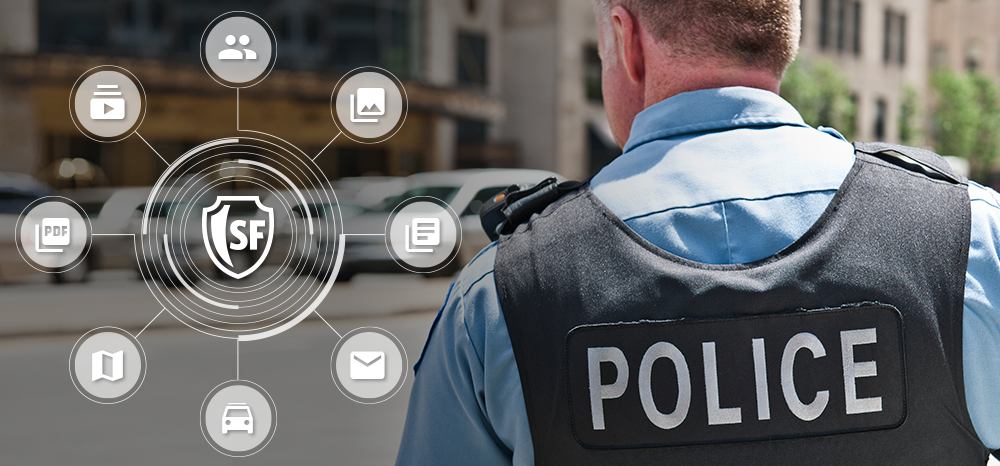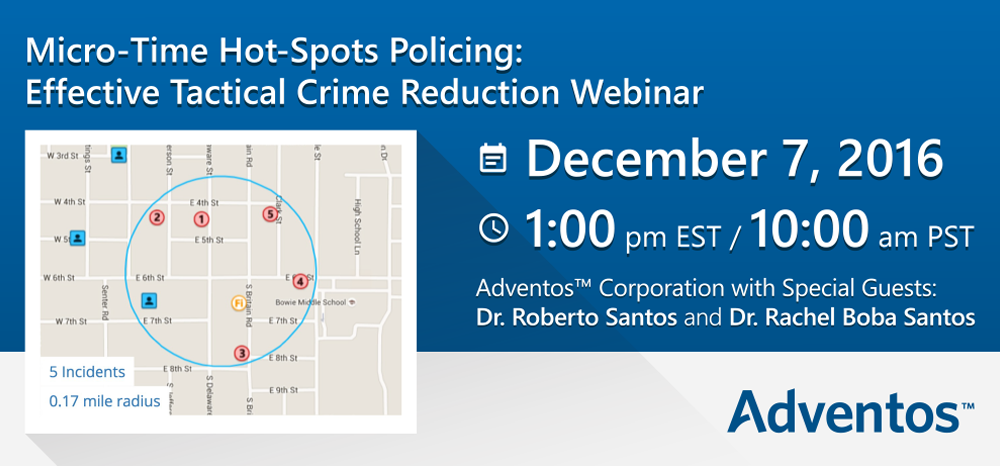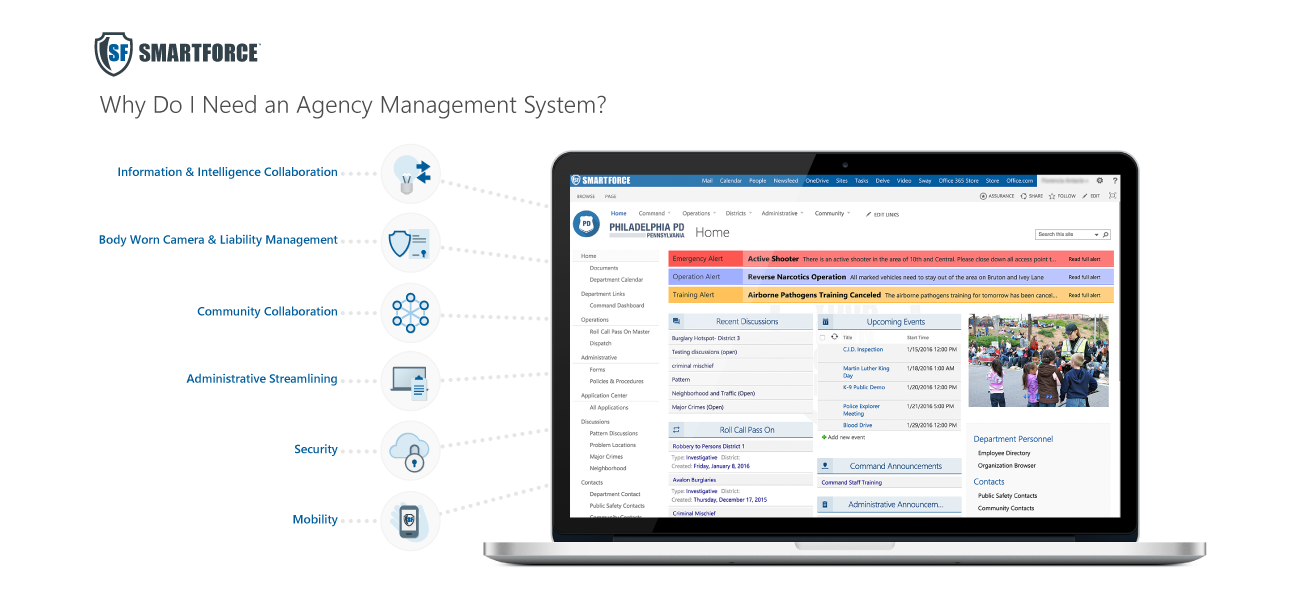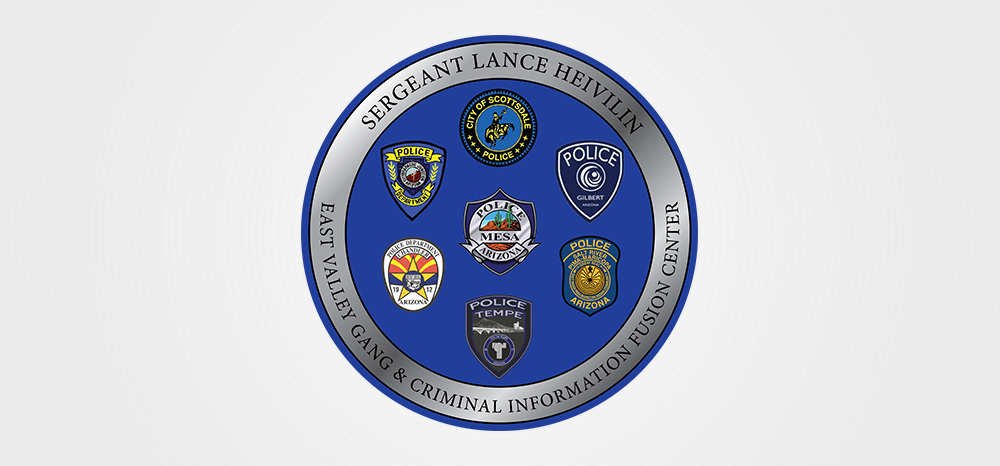 If you’re like most agencies, breaking through to a new level of success with your crime reduction strategies can be challenging. Read this case study at PoliceOne.com to see if you are facing similar challenges that this Fusion Center overcame.
If you’re like most agencies, breaking through to a new level of success with your crime reduction strategies can be challenging. Read this case study at PoliceOne.com to see if you are facing similar challenges that this Fusion Center overcame.
Author: Brian Mc Grew
Grand Junction Police Dept. Continues to have success with their Proactive Approach to Crime Reduction
The Grand Junction Police Department has found the utilization of proactive policing can make a difference in their community. Over the past three years alone, CFS (or “calls for service”) in the 2100 North Avenue area grew to an unsettling average of about 130 per week. Calls ran the gamut among nearly every type of crime you could think of and the department was devoting a huge amount of its resources to this one area and trends still showed no signs of reversing. It was clear that a new approach was needed and it was needed as soon as possible.
The new approach decided upon was to leverage a police-centric intelligence collecting and sharing platform to collect and disseminate operational information, align manpower, manage equipment, and account for officer activity.
With the addition of the SmartForce™ Agency Management System (AMS), the Grand Junction Police Department embarked on an active, focused operation for 13 weeks (February 17, 2017 to May 17, 2017) on the 2100 North Avenue area.
By creating an “Ops Discussion” in SmartForce™ for the different units within GJPD to post and access information in real-time, officers and supervisors gained immediate visibility over key data, direction, manpower, equipment, and other resources associated with the 2100 North Operation. Officers could view real-time updates from their crime analyst on where crimes were taking place, what kinds of crimes, and contact information about suspects in the area as well as those calling for service. Supervisors made decisions on deploying manpower and equipment resources based on the real-time data so as to deter crimes from occurring through such a pro-active policing approach.
The results speak volumes. From the charts below comparing Calls for Service over like time periods to the 2100 North Avenue, a full 50% decrease was seen or 65 per week. Even after the operation had completed, the CFS rate dropped to only six per week – a record low for the area and the department. 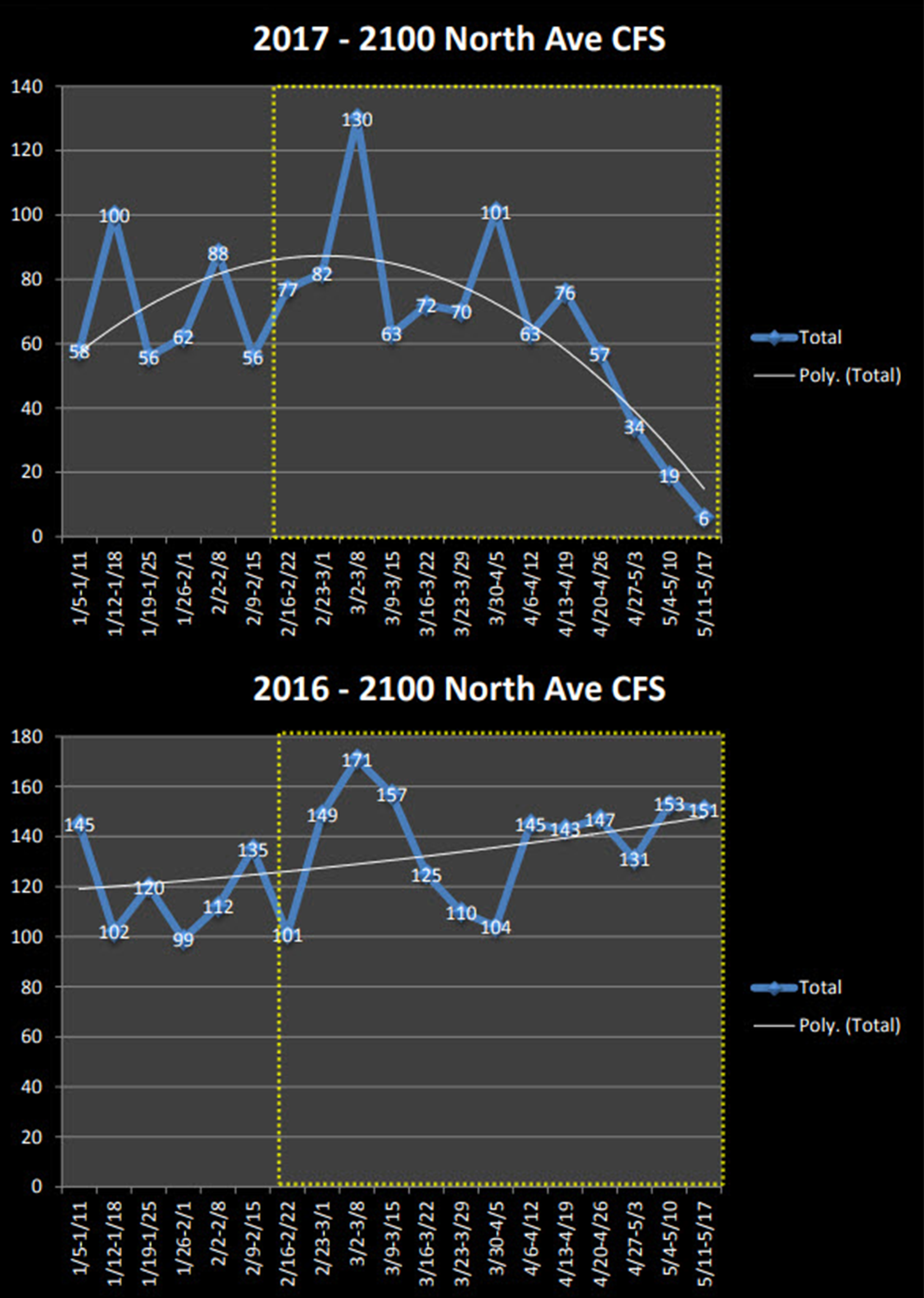
In short, SmartForce™ gave the Grand Junction Police Department something much more powerful than simple information – it gave them real-time insight and operational organization never before realized to significantly elevate public safety to this problem-area for the first time in years.
The Crime Reduction Problem: A Technology Perspective
Even though we have faster computers and more information than ever, you would think that law enforcement agencies would have more speed and success at reducing crime. Unfortunately, this is not the case in many U.S. cities as crime and threats continue to climb. Some reasons are:
- Increasing numbers of text, photo, and video data bases that are not integrated with a common search feature
- Poor search engines that can’t search inside pdf documents or text narratives
- Lack a comprehensive system for communicating, tracking, reporting, or assessing crime reduction efforts. Most LE agencies only have systems for calls for service, reporting crimes, and case management
- No system for multi-jurisdictional collaboration and sharing of crime data.
To reduce crime in today’s environment of exponential increases in text, photo, and video data as well as increased population to officer ratios, it requires speed to search and access data, speed in providing direction to patrol on where crimes are happening, and ease of assessing activity and results. Without speed, crime patterns are not addressed early enough to disrupt or stop the patterns and crime continues to rise.
The Technology Solution
Only invest in technology that has the capability to solve 2 or more of the challenges listed above so you can add more speed into your agency. No longer can you or your agency get a return on investment of buying another software program that operates in a silo and only solves 1 problem. We must kill more than one bird with a stone and acquire software you can continue to grow into.
If you are trying to align and direct patrol with real-time information and intelligence for improved crime reduction, you may want to check out the new features of the SmartForce™ Agency Management System from Adventos. SmartForce™ provides a force-multiplier system for communicating, tracking, reporting, and assessing crime reduction efforts that can also share crime data with neighboring LE agencies. Click here to check out a short video of the SmartForce™ crime reduction features or click here to read a PoliceOne article on how the Port St. Lucie Police Department uses SmartForce™ to reduce property crimes by 20+% year over year.
Fountain Police Department and SmartForce™ Team-up to Maximize their Re-organization
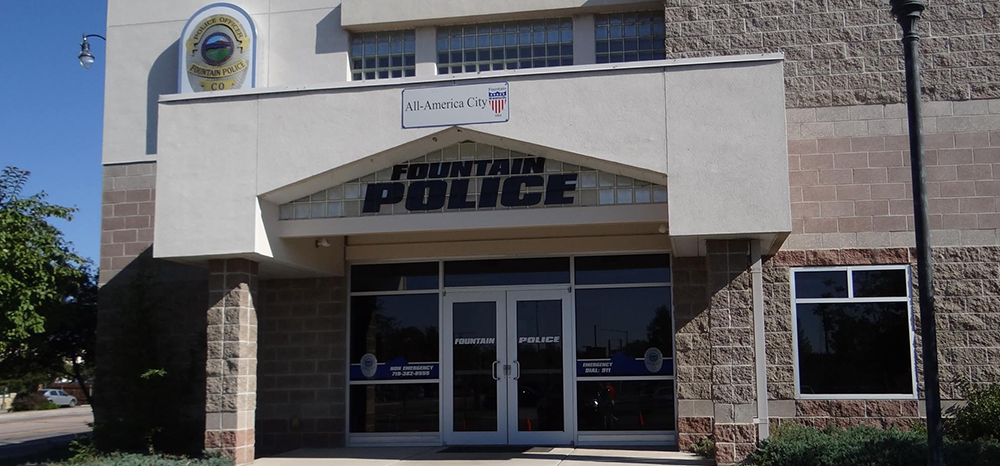 Fountain PD re-organizes and introduces SmartForce™ technology. Both of which break-down walls leading to better communication and better policing. Lt. Coates comments and explains their new motto, philosophy, and strategy for 2017. Click here to read more.
Fountain PD re-organizes and introduces SmartForce™ technology. Both of which break-down walls leading to better communication and better policing. Lt. Coates comments and explains their new motto, philosophy, and strategy for 2017. Click here to read more.
What better policing strategies and tactics are you implementing in 2017? Please share….
New Crime Reduction Webinar Educational Opportunity!
When it comes to crime reduction efforts, at least 3 questions must be answered as a law enforcement agency heading into 2017.
1. Did we achieve our crime reduction goals and results in 2016?
2. What are our crime reduction goals for 2017?
3. What can help my agency achieve our 2017 goals?
In our upcoming FREE webcast, we’ll provide you with education and tools needed for executing micro-time hot-spots policing as a proactive policing strategy for reducing, preventing, or disrupting crime. Join us to learn evidence-based best practices that produce a 20%+ reduction in property crimes in micro-time hot-spots from the researchers themselves, including:
✓ Why respond to short-term as well as long-term hot spots
✓ What type of police response works in micro-time hot-spots
✓ How leaders can make sure responses are happening
✓ Time-saving and effective interactive tools
Master one of the most effective 21st century policing strategies: Micro-time Hot-Spots Policing. Register Now before all seats are taken!
Thanks for all you do and be safe!
Introducing the SmartForce™ Bulletin Wizard for Law Enforcement
 Adventos announces the launch of the SmartForce™ Bulletin Wizard. The SmartForce™ Bulletin Wizard is the first and only research-based bulletin maker for law enforcement crime analysts and detectives with templates that create standardized crime analysis products formatted to maximize tactical crime reduction responses. Read entire article here.
Adventos announces the launch of the SmartForce™ Bulletin Wizard. The SmartForce™ Bulletin Wizard is the first and only research-based bulletin maker for law enforcement crime analysts and detectives with templates that create standardized crime analysis products formatted to maximize tactical crime reduction responses. Read entire article here.
The “Big-Three” Police Software Systems
 You’ve all heard of CAD and RMS and know they are integral systems for operating a law enforcement organization. However, in today’s policing a new system is required. The third leg of the Police “3-Legged Stool” is an Agency Management System (AMS). Thankfully this third system does not come with the same price tag or require the intense resource allocation of CAD and RMS, but it is equally integral to operating in an environment of ever increasing demands that outpace government budgets.
You’ve all heard of CAD and RMS and know they are integral systems for operating a law enforcement organization. However, in today’s policing a new system is required. The third leg of the Police “3-Legged Stool” is an Agency Management System (AMS). Thankfully this third system does not come with the same price tag or require the intense resource allocation of CAD and RMS, but it is equally integral to operating in an environment of ever increasing demands that outpace government budgets.
Why Do I Need an Agency Management System?
With today’s increased demands and expectations on law enforcement agencies, gone are the days of just responding to calls for service and writing reports. Therefore, a third software solution is required in addition to CAD and RMS systems. In general, Agency Management Systems (AMS) enable quicker search and access to critical data, targeted information sharing, user-friendly electronic workflows, and facilitate collaboration so key initiatives and group problem solving are accomplished more efficiently. SmartForce™ is a unique AMS since it is law enforcement specific, meets the Criminal Justice Information Services Division’s strict standards for security, and allows for internal and external collaboration. Other off-the-shelf systems do not meet this criteria, are not designed to account for today’s evidence-based law enforcement complexities or workflows, and provide limited information-sharing features.
What Makes SmartForce™ So Great?
The SmartForce™ Agency Management System (AMS) enables law enforcement agencies to manage their ever increasing amount of data and complex departmental functions more accurately and efficiently, as well as improve intelligence-led and community-policing strategies.
Best of all, SmartForce™ was designed for officers—to be user friendly and secure—with input from more than 300 public safety customers. Today, we have customers from coast to coast ranging from small to large market police departments, sheriffs’ offices, and even a gang and intelligence fusion center all using SmartForce™ and continuing to provide us feedback on how it can make their jobs easier and provide greater levels of public safety.
Let’s face it…you’re constantly called to do more with less. SmartForce’s technology does more by helping your agency work Smarter! Positive outcomes of our SmartForce™ AMS include:
- Better execution of crime reduction and prevention strategies
- More efficient management of community-policing efforts during uncommitted patrol time
- More procedural justice transparency and quicker reporting for command staff, elected officials, the general public, or media
- Faster communication of incident details to officers, particularly in life-or-death situations
- Better management and reporting of high liability concerns like use-of-force and complaints
- More automated administrative processes (e.g., tasks, shift change assignments, document management), enabling more uncommitted time
- Easier management of training, compliance, and reporting workflows
- More collaboration with neighboring agencies and community partners
Other Agency-relevant considerations that guided Adventos’ development of SmartForce™ include:
- A mobile-friendly design enabling ease-of-use on desktop computers, MDC’s, tablets, and smartphones
- New hardware isn’t needed
- An intuitive design for all levels of sophistication and agency sizes
- Quick and effective training
Meaningful Intelligence Sharing
Availability — Information sharing isn’t enough. Information needs to be shared to the right people, with the right priority…instantly. Information must also be found quickly with a deep search engine that can even dig through pdf’s, video, and audio files. Available information is the only valuable and actionable information. Email fails to meet these criteria. SmartForce™ ensures law enforcement personnel can access and share the critical information they need, when they need it.
Internal Group Problem Solving — SmartForce™ helps agency groups solve problems by providing easy access to relevant data as well as real-time discussion threads and bulletin boards to collaborate and complete projects together in a faster period of time.
Community Group Engagement — SmartForce™ lets community groups and local businesses share content like building blueprints, surveillance video, photos, and crime prevention strategies; engage in real-time discussions; and post questions and answers among key organizational leaders, task forces, and other agencies. Business owners, schools, HOAs, churches, and other community partners that have used these features report immediate and improved feelings of security and a better connection to law enforcement agencies.
Security
SmartForce™ enables departments to set permissions and security features for specific job functions from sworn to non-sworn in regard to criminal investigations, situational awareness, and administrative tasks.
SmartForce™ is hosted in Microsoft’s Government Cloud, so mission-critical data is secured in a CJIS compliant environment, and always accessible. In states where a signed information agreement is necessary, Microsoft has signed the Security Addendum of the FBI CJIS Security Policy which requires Microsoft to meet the same requirements public safety and law enforcement agencies are held to. It also means your agency can prove compliance by using the signed Security Addendum as evidence.
Mobility First
SmartForce™ reduces unnecessary administrative and travel time for officers in the field. Many functions previously requiring administrative extra steps and travel are easily and securely performed in SmartForce™, from anywhere. For example, officers returning from off-duty can be caught up immediately by scanning the SmartForce™ shift briefing board from their smartphones and there is no need to burn DVD’s of video/photo evidence to be couriered to the District Attorney’s office during case preparation for court proceedings.
Most Popular SmartForce™ Features
Information and Intelligence Collaboration
- Roll-Call/Shift Briefing Bulletin Boards
- CJIS compliant Bulletin Dissemination
- Real-Time Criminal Intelligence
- Officer Safety Intelligence
- Discussion Threads to collaborate on pattern crimes, problem locations, major crimes and neighborhood/traffic
- Photo, Video, Bulletin, and Warrant Libraries
- Assigned Problems Manager
- Alerts and Announcements Manager
- Community Bulletin Board
Body Worn Camera and High Liability Management
- Response to Resistance Reporting
- Complaints and Commendations Reporting
- Compliance Management
- Training Officer Management (FTO, PTO, or Modified)
- Public Information Officer
- Video Library Management
Community Collaboration
- Community Partner Access Sites for Neighborhood Watch, Schools, Business Watch, Task Forces, etc.
- Community Leaders Discussion Forum
- Community Request Management
- Activity/Initiative Management
- Community Policing Outreach
Administrative Streamlining
- Legal, Policy, and Training Acknowledgement
- Document Management
- Calendar Management
- Forms Library
- Policy Library
- Inventory or Quartermaster Management
- Extra-Duty
- Public Safety and Community Directory
- Absence and Vacation Tracking, including approval workflows
How Computer Technology has Improved Crime Analysis
 In just a few short years, computers have revolutionized nearly every industry and activity including crime analysis. There are a number of key ways in which computer technology has made it easier for law enforcement to do its job and to better execute policing strategies for crime prevention and reduction that keep our communities safer and more secure for generations to come.
In just a few short years, computers have revolutionized nearly every industry and activity including crime analysis. There are a number of key ways in which computer technology has made it easier for law enforcement to do its job and to better execute policing strategies for crime prevention and reduction that keep our communities safer and more secure for generations to come.
Agency Management
An agency management system is important not only for crime analysis, but for law enforcement as a whole. With a police agency management system, disparate data bases and redundant procedures can be eliminated, efficiency increased, and costs kept under control. These systems make it easy to manage official communication, streamline administrative processes and improve crime reduction efforts.
Crime Analysis
Analyzing crimes and understanding where crime is likely to happen in the future requires a variety of computerized tools and programs to determine likely repeat suspects and other crucial details. Data from computer aided dispatch (CAD) and records management systems (RMS) is compiled using crime analysis software which can make it easy to analyze trends, generate graphs and heat maps.
Geographic Analysis
Analyzing geographic information is essential for analyzing and predicting crime. This data includes maps of the locations of sex offenders, parolees, probationers, and other persons of interest to law enforcement. Many agencies handle this through a program called Geographic Information Systems, or GIS.
Communicating Crime Analysis Information
Because crime analysis generates a plethora of records and crime bulletins, organizing and disseminating them efficiently to the right audiences in a CJIS compliant environment is an essential part of the job. Analysts combine common suites like Microsoft Office with sophisticated programs such as SmartForce™ for targeted information sharing, accountability, and CJIS security that simply can’t be accomplished or sustained through email.
Social Media
For police agencies, going onto sites like Facebook and Twitter isn’t time-wasting like it might be for the rest of us. Many criminals have given themselves away by posting evidence of themselves committing or planning to commit crimes as well as associating themselves with other persons of interest, which makes keeping a watchful eye on these sites of paramount importance. Law enforcement agencies make sure that their officers are also online searching social media so that when these things happen, cases can be cleared more efficiently.
These are just a few of the many ways in which technology is changing the crime analysis playing field. If you’d like to find out more information about how upgrading your technology systems will help your crime analysis, prevention, and reduction efforts as well as other essential aspects of your operations, please don’t hesitate to contact us today, 303-800-5044.
Crime Prevention & Reduction Demands Real-Time Information Sharing and the Human Factor
 We live in an age where the volume of data available to us has amassed to such a degree that it presents a unique set of challenges for law enforcement. When dealing with the huge volumes of data, getting the RIGHT information to the RIGHT people as quickly as possible can be a huge undertaking on the best of days. On top of this, the speed at which our environment demands, makes real-time information sharing extremely important and valuable. Many challenging decisions must be made without having all the information needed so having the most up-to-date data plays a huge role in the outcomes of decisions that must be made.
We live in an age where the volume of data available to us has amassed to such a degree that it presents a unique set of challenges for law enforcement. When dealing with the huge volumes of data, getting the RIGHT information to the RIGHT people as quickly as possible can be a huge undertaking on the best of days. On top of this, the speed at which our environment demands, makes real-time information sharing extremely important and valuable. Many challenging decisions must be made without having all the information needed so having the most up-to-date data plays a huge role in the outcomes of decisions that must be made.
Most law enforcement agencies have multiple data bases and personal email folders they are using to store the volumes of data they are receiving and producing. Since data is housed in disparate data bases and folders, it is very challenging and time consuming to search and access the relevant data that needs to be a part of critical decision-making. From this information overload problem, a solution has emerged that is quickly proving to be an important addition to law enforcement’s arsenal for making communities safer and better places to live.
Illustrating the Challenges of a Big Data World
To understand just how difficult managing massive volumes of data can be, consider the example of a Special Operations Task Force fighting Al Qaeda in Iraq. In the “Situational Awareness Room” you essentially have a perfect visual metaphor for big data – a dozen flat screen televisions, each with their own live feed of some far off location, rooms equipped with communications equipment constantly bringing in new pieces of intelligence, and data and information portals providing updates and “need to know” information that changes by the minute.
How do you cut through all the noise and find what you’re really looking for? How do you keep organized and manage the various moving parts of a fluid situation while it is in the process of unfolding? How do you process this data to make not just a decision, but the most appropriate decision to positively alter outcomes vs. just reacting?
Big Data and Law Enforcement
One agency that is paving the way in terms of both crime prevention and reduction through real-time information sharing and the human factor is the Port St. Lucie Police Department. Here, a team of crime analysts, agency leaders, detectives, and patrol officers fuse information into a centralized forum to contextualize and prioritize incoming crime data. They organize the crime information into patterns, problem locations, major crime, and neighborhood/traffic that they are focused on preventing or reducing during un-committed time. Crime bulletins are crafted to contain the right amount of information and context. Agency leaders decide on which responses to employ based on severity of crime. Detectives, patrol districts, and specialty units are sent information in a targeted manner where it goes to the specific groups of individuals that are best suited to act on it.
Once new information emerges or the context of that data changes, their crime analysts snap into action. They post in real-time updated crime analysis products in their secure SmartForce™ agency management system for the necessary personnel to review. Officers are no longer drowning in emails, but empowered with real-time information targeted to their beats and roles. All police personnel involved in the response see and participate in real-time data sharing and problem solving activities in an organized forum. Information and activity does not fall between the cracks, rather it is collaborated on through the human factor and more speed is achieved in clearing cases, finding missing persons, and resolving “hot-spots.”
The SmartForce™ Approach
The SmartForce™ agency management system allows an agency to organize the massive volume of information, target the information to those who need it most, and facilitate the human factor of real-time dialogue of emerging information and intelligence to speed the achievement of an agency’s crime prevention and reduction goals. What is even more impressive about this agency management system is that it is housed in a CJIS compliant environment and can be used on any mobile device whether in a patrol car, on a smartphone, or back at the station.
We know that technology does not prevent or reduce crime, officers do. SmartForce™ compliments your CAD, RMS, and analytics tools. But the real magic with the SmartForce™ approach is that it combines the human factor in your agency with easily accessed critical data for higher levels of public safety.
For more information or to get a FREE 30 day trial of SmartForce™ contact us at 303-800-5044 or visit our website at www.adventos.com.
Koper Curve and SmartForce
 The Koper Curve theory of policing is gaining traction in a number of police departments. Yet for many agencies, having the right data and analysis available to implement the Koper Curve method is daunting. Poor record-keeping and a lack of usable data can hinder policing efforts to reduce crime incidents with this policing strategy.
The Koper Curve theory of policing is gaining traction in a number of police departments. Yet for many agencies, having the right data and analysis available to implement the Koper Curve method is daunting. Poor record-keeping and a lack of usable data can hinder policing efforts to reduce crime incidents with this policing strategy.
Fortunately, there are platform solutions to help police departments more efficiently connect people and data to help prevent and reduce crime in problematic areas.
Koper Curve Explained
The Koper Curve is named for Christopher S. Koper, an associate professor at George Mason University and Senior Fellow at the university’s Center for Evidence-Based Crime Policy. The premise is based on the notion that most crime incidents occur in a small percentage of areas in a particular jurisdiction. Some studies indicate that as much as 50 percent of crime occurs in less than 5 percent of blocks or street segments.
By focusing on these hot spots, Koper’s research found, crime rates can be reduced substantially. Instead of stationing officers in one place or telling patrol officers to patrol hot spots is costly and ineffective. Instead, the theory recommends proactive, random and intermittent patrols of these hot spots for 10-16 minutes at least every two hours. Koper’s research showed that the likelihood of criminal activity within 30 minutes of a patrol drive-by was 15 percent. When random police stops lasting 10-16 minutes were incorporated, the likelihood of criminal activity dropped to 4 percent.
The key is intermittent, unscheduled patrols of a meaningful duration rather than regularly scheduled drop-ins.
From a resource perspective the Koper Curve principle has other advantages. For one it makes better use of patrol officers’ time. Secondly, it builds trust and credibility within the nearby community through increased presence and visibility.
Data challenges
Departments seeking to operationalize the Koper Curve principles in their patrols are to be commended. It is a powerful example of evidence-based police work.
However, many agencies face constraints in implementing the Koper Curve due to a lack of processes and systems to collect, track, and analyze the pertinent data. Without data that can easily be entered, stored, accessed and acted upon, there is little accountability for hot-spot policing and it is difficult to manage or measure results. While some department personnel may have educated guesses or hunches as to where those hot spots are or the results from hot-spot policing, a clear examination of the data is required to make a clear determination.
SmartForce™ from Adventos is a powerful solution. SmartForce™ is a first-of-its-kind agency management system software platform that lets law enforcement agencies connect internally and to their communities. Agencies using SmartForce™ are more efficient, better organized and have more functionality for collaborating on intelligence needs, connecting with the public, and keeping officers informed and safe.
SmartForce™ has a module specifically designed to let officers input their patrol activities during un-committed time in one location. Categorized data, easy retrieval, and clear reporting lets analysts and supervisors access the information both in real time and after the fact. By aggregating directed patrol information, offender checks and citizen contacts, departments can prevent or reduce crime in particular jurisdictional areas.
For departments eager to use the Koper Curve model to make their communities safer, SmartForce™ from Adventos is the right choice.
For more information about the SmartForce™ Agency Management System and how it improves hot-spot policing, community-policing, and intelligence collaboration, click here to watch the SmartForce demo. After watching the demonstration video, interested law enforcement officials are invited to request a free trial of the agency management. Click here to view the video and request a free trial today.



